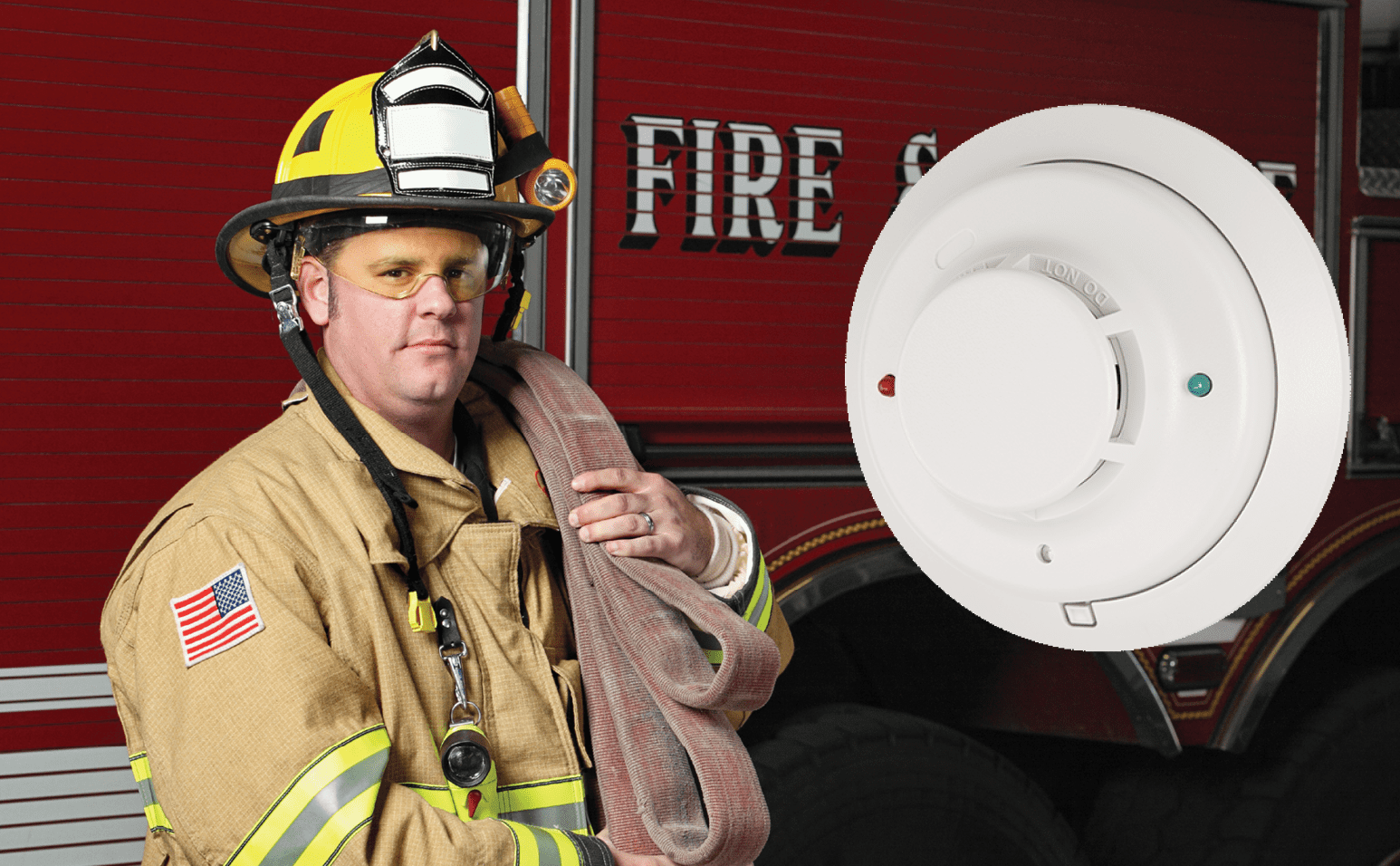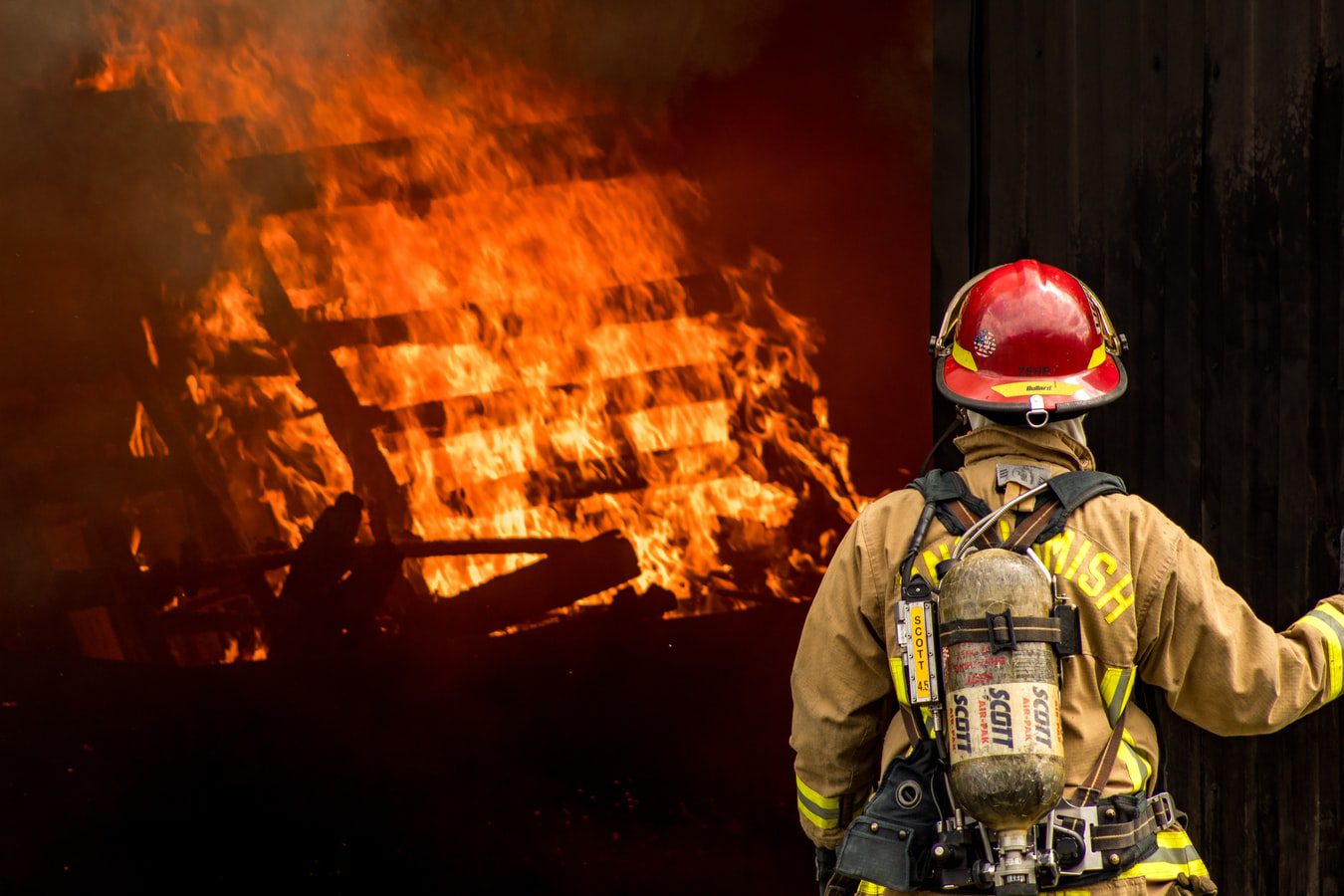
 A smoke detector is one of the most immediately recognizable life safety devices. Fire code requires their installation in both residences and businesses, and if you’ve ever made bad decisions in your home kitchen, you have likely experienced the “alarm” side of “fire alarm device.” The function of a smoke detector might appear obvious, but the proper utilization of a smoke detector isn’t so simple. A smoke detector requires proper design, installation, and routine service to work as intended and provide optimum protection and early detection against devastating fires.
A smoke detector is one of the most immediately recognizable life safety devices. Fire code requires their installation in both residences and businesses, and if you’ve ever made bad decisions in your home kitchen, you have likely experienced the “alarm” side of “fire alarm device.” The function of a smoke detector might appear obvious, but the proper utilization of a smoke detector isn’t so simple. A smoke detector requires proper design, installation, and routine service to work as intended and provide optimum protection and early detection against devastating fires.
How does a smoke detector work?
Smoke detectors are classified based on what kind of sensor they use to distinguish the presence of smoke particles in a room. There are two different types of smoke detection and smoke detectors available today, and they work and sense smoke quite differently.
- Ionization Detectors
- Photoelectric Detectors
Ionization smoke detectors have small traces of radioactive material located between two electrically-charged plates. Ions flow between the charged plate, a flow that is disrupted when smoke particles enter the compartment. When the flow is disrupted, the smoke detector alarms. These kinds of smoke detectors work the best in the presence of open flame.
EPS Security utilizes photoelectric smoke detectors in its fire alarm systems. These devices emit an LED light beam inside the detection chamber. If smoke particles enter the chamber, it scatters the light beam, deflecting some of the light onto the photoelectric (light) sensor. When the light is detected, the smoke detector alarms. These detectors are especially good at detecting smoldering fires that have not yet combusted into an open flame, which means they are excellent at early fire detection—and when it comes to fire protection, early detection is essential in evacuating personnel and dispatching emergency units to contain the fire at its initial stages.
 Where are smoke detectors used in a home or business?
Where are smoke detectors used in a home or business?
The primary functions of a fire alarm system are to alert any occupants to the emergency and to evacuate the premise, as well as alerting the local fire department of the need for emergency dispatch. Smoke detectors are the bread and butter of a fire alarm system’s detection devices. They are strategically placed throughout a home or facility to maximize their capacity for early detection regardless of where a prospective fire begins. For industrial areas that may be too dusty and trigger a smoke detector’s sensor inadvertently, heat detectors may be used as an alternative.
The specific locations of smoke detectors in a building are dictated by fire code. For homes, smoke detectors are required:
- On every level, including basements
- In each bedroom
- Outside each separate dwelling unit sleeping area and within 21 feet of any sleeping room door
- At least ten feet away from a cooking appliance
Homes are also subjected to local fire codes, which may dictate the need for additional smoke detectors. Businesses have their own set of mandated codes for smoke detector placement that are determined by the particular type of commercial property in question.
How does a smoke detector function on a fire alarm system?
When smoke is detected, the smoke detector sends an alarm signal to the fire alarm control panel, the “brains” of the system. Two events then occur simultaneously. The control panel sets off audible and visual alerts throughout the building to alert occupants of the need to evacuate. On traditional fire alarm systems, these are horns and flashing strobes situated throughout a building so everyone can be alerted to the emergency. On a voice evacuation system, the audible alerts come in the form of a human voice with specific evacuation instructions depending on emergency procedure. At the same time, the control panel sends an alarm signal through landline or cellular communicator to a designated 24/7 monitoring center. A monitoring operator reviews the signal and immediately calls the local fire department to notify them of the emergency. By dispatching immediately on fire alarm signals, the time between the fire outbreak and the emergency response is minimized, potentially saving lives and property.
 The EPS Advantage
The EPS Advantage
Smoke detectors are critical in the protection of both lives and property, but they aren’t perpetual machines. Like all fire alarm devices, smoke detectors require routine maintenance, service, and sensitivity testing to ensure proper function and responsiveness to emergency situations. In fact, fire systems are required to receive annual testing by fire code. Because fire alarm devices such as smoke detectors are tasked with protecting actual lives and livelihoods, keeping them working at maximum efficiency is essential.
EPS Security has over 65 years of experience in engineering, installing, servicing, and testing fire alarm systems. EPS fire alarm devices are supplied by world-renowned vendors so our customers know they’re receiving the highest quality equipment. Our consultants and engineers work with our customers to deliver a comprehensive life safety solution that is unique to their specific needs and building layouts. Our technicians are well-versed in the installation and service of fire alarm systems. We even have a dedicated team of technicians who are specially trained in routine fire alarm testing. When it’s comes to protecting lives and property, don’t settle for anything less than the best. Trust in EPS Security for your fire alarm needs and discover a customized security solution 65 years in the making.
